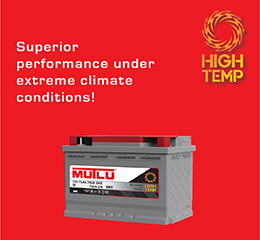Frequently Asked Questions
What is the function of a starter battery?
What if the wrong battery is chosen?
Is it possible to use EFB batteries for vehicles not equipped with the start-stop technology?
What is the reason that the start-stop system in vehicles does not work?
- The outside temperature is low
- Engine temperature is low
- The inside of the vehicle has not reached the required temperature
- Heating systems such as the demister are running at high speed
- Air conditioner compressor is running at the highest speed
- Seatbelt is not fastened
- The car’s hood is left open
- The driver’s door is left open
- The car is on an extremely steep slope
- Parking sensor is active
- Reverse gear is being used
- The steering wheel is turned more than a quarter round in any direction
- Gear is shifted when the vehicle is about to stop
- Battery sensor does not function
- A battery not suitable for the car is used
- Battery charge is at the lower limit
What should you do when the start-stop system cannot be enabled?
Is it okay to keep the vehicle running when installing a start-stop battery?
Does the battery affect fuel consumption?
What does it mean if the charge acceptance of a battery is high?
What does it mean if the vibration resistance of a battery is high?
What do the values such as 12V 60Ah 540A EN on the label mean? What do values like CCA EN, CCA SAE, DIN and JIS indicate?
What does the indicator on the battery do? What should I do if the green light on the indicator is off?
For vehicles that will not be used for a long time, is it required to remove the battery's lead terminals?
What is the difference between the fully sealed cover system and the removable cap system?
What technologies are used in the production of the grids inside the batteries?
The production method of the grids depends on the grid material to be used and the conditions under which the battery will be used. In addition to this, various production technologies have emerged due to different needs, expectations and designs. Mutlu Battery uses four kinds of production technology in grid production.
For lead alloy grids, the Gravity (Cast) Production Technology is used to reduce corrosion and increase resistance under different temperature conditions. The Expanded Production Technology is used when many homogenous lead alloy grids are requested. Con-Cast Production Technologies eliminate the disadvantages of the traditional cast method and allow serial production of homogenous grids, and they are used in the production of certain types of batteries. Punch Production Technologies are used when required to provide a high level of freedom when designing the grid pattern.
To speak in more detail about production technologies:
Gravity (Cast) Production Technologies
For lead alloys, different calcium ratios were used to increase the battery’s resistance to different climate conditions, and the heat resistance was improved to offer batteries with a long service life to customers. The patented special Mutlu calcium alloy reduces grid corrosion, especially under high temperatures, which gives the batteries a longer service life.
Traditional battery ranges are still in production considering the significant number of old-make cars in Turkey. These products are also continuously improved.
Expanded Production Technologies
In addition to the traditional cast grid method, Mutlu Battery has been using the expanded metal (Ex-met) technology since 1999 for positive and negative grids in grid production. Among the standard Mutlu starter batteries manufactured for the aftermarket, grids of all models between 35Ah and 110Ah are manufactured using this system. In this method, the lead alloy is first cast as a strip. Then it is milled before it is cut and expanded to a strip grid. The strip grid manufactured is plastered on the same line, ensuring that many homogenous plates can be obtained.
Con-Cast Production Technologies
In the traditional mold cast method, production is interrupted and products are manufactured one by one, which reduces the production output, and the interrupted production process increases production deviations. To reduce problems arising out of this method, Mutlu Battery began using the con-cast production system in 2011. The uninterrupted casting system allows for manufacturing homogenous grids with low deviation values. Negative grids manufactured with this system are used in Heavy Duty and Super Heavy Duty batteries, which have a strong inner structure. Moreover, negative plates of AGM batteries by Mutlu are also manufactured with this production technology.
Punch Production Technologies
The punch system is the most recent point reached in the grid production technologies. The lead alloy is cast as a wide strip in this system and then milled. The milled strip is then punched in the punching machine and turned into a grid. As the punch mold can be designed as desired in this method, it is possible to design the grid pattern as desired as well. This ensures that specific grid patterns can be designed that reduce grid growth and support active substance adsorption.
Thanks to the investment it made in the punch system, Mutlu Battery can now use this method to manufacture certain special types of batteries.
What do the SFB Series 1, SFB Series 2, SFB Series 3 mean on the heavy commercial vehicle batteries by Mutlu? What is the difference between them?
What is the importance of keeping the battery surface clean in commercial vehicles that do not have a closed box for the battery, such as trucks and vans?
What should you do if you have a problem with the battery within the warranty period?
For batteries replaced under warranty, from which point does the warranty period resume?


